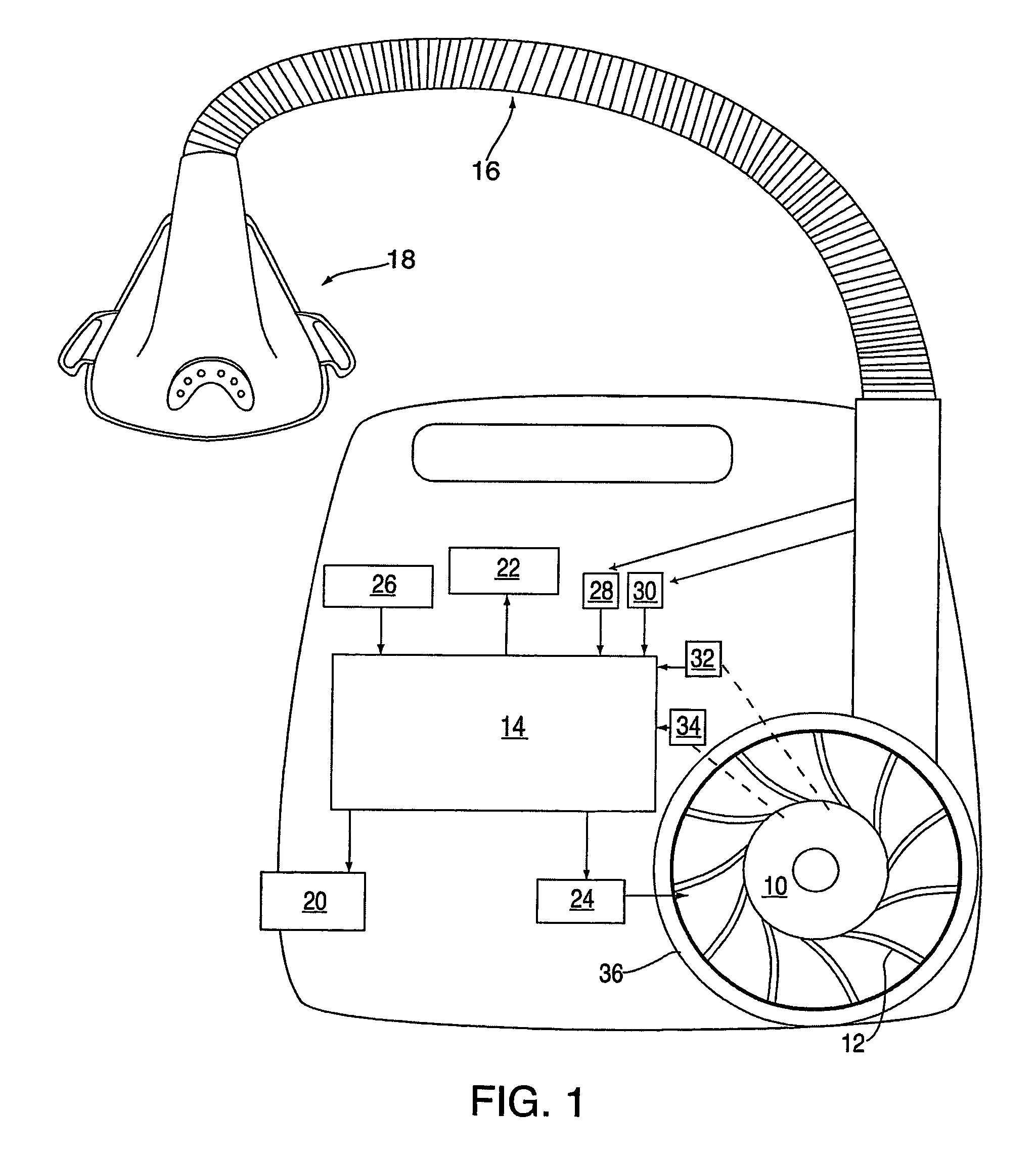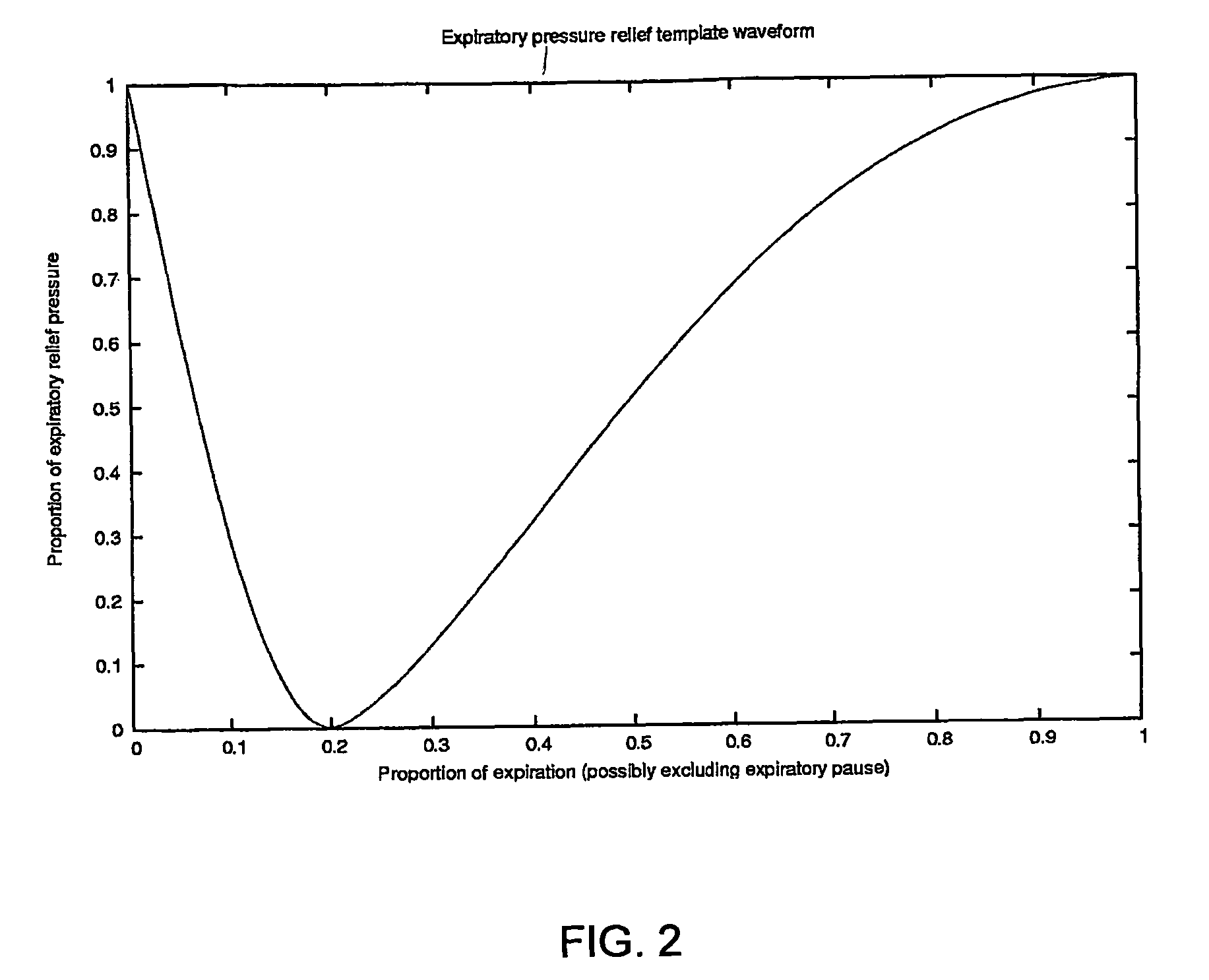Methods for providing expiratory pressure relief in positive airway pressure therapy
a positive airway pressure and expiratory pressure technology, applied in the field of providing expiratory pressure relief in positive airway pressure therapy, can solve the problems of patient discomfort, patient discomfort, and the shape of the waveform actually delivered to the patient, and achieve the effect of smoothly varying the pressure waveform
- Summary
- Abstract
- Description
- Claims
- Application Information
AI Technical Summary
Benefits of technology
Problems solved by technology
Method used
Image
Examples
Embodiment Construction
[0023]FIG. 1 shows apparatus in accordance with an embodiment of my invention. An electric motor 10 has an impeller 12 attached to it. The impeller 12 resides in a volute 36. The motor 10 is under the control of a motor controller 24 (suitable controllers include TMS320LC2402 or MC33035 IC). The motor includes sensors 32, 34 that provide signals indicative of motor rotational speed and current respectively. When the windings of the motor are energized, the impeller rotates. Air is drawn in through the inlet of the impeller and gains momentum. As the air passes out of the impeller and into the volute, it changes speed and develops pressure. Air passes out of the volute, past flow and pressure sensors 28, 30 (such as SMI5652-003 flow sensor and SMI5652-008 or MPX2010 pressure sensors) respectively to an air delivery conduit 16 (for example, manufactured by Smooth-bor Plastics) that is in turn connected to a patient interface 18 which in the illustrated embodiment is a nasal mask, for ...
PUM
 Login to View More
Login to View More Abstract
Description
Claims
Application Information
 Login to View More
Login to View More - R&D
- Intellectual Property
- Life Sciences
- Materials
- Tech Scout
- Unparalleled Data Quality
- Higher Quality Content
- 60% Fewer Hallucinations
Browse by: Latest US Patents, China's latest patents, Technical Efficacy Thesaurus, Application Domain, Technology Topic, Popular Technical Reports.
© 2025 PatSnap. All rights reserved.Legal|Privacy policy|Modern Slavery Act Transparency Statement|Sitemap|About US| Contact US: help@patsnap.com



